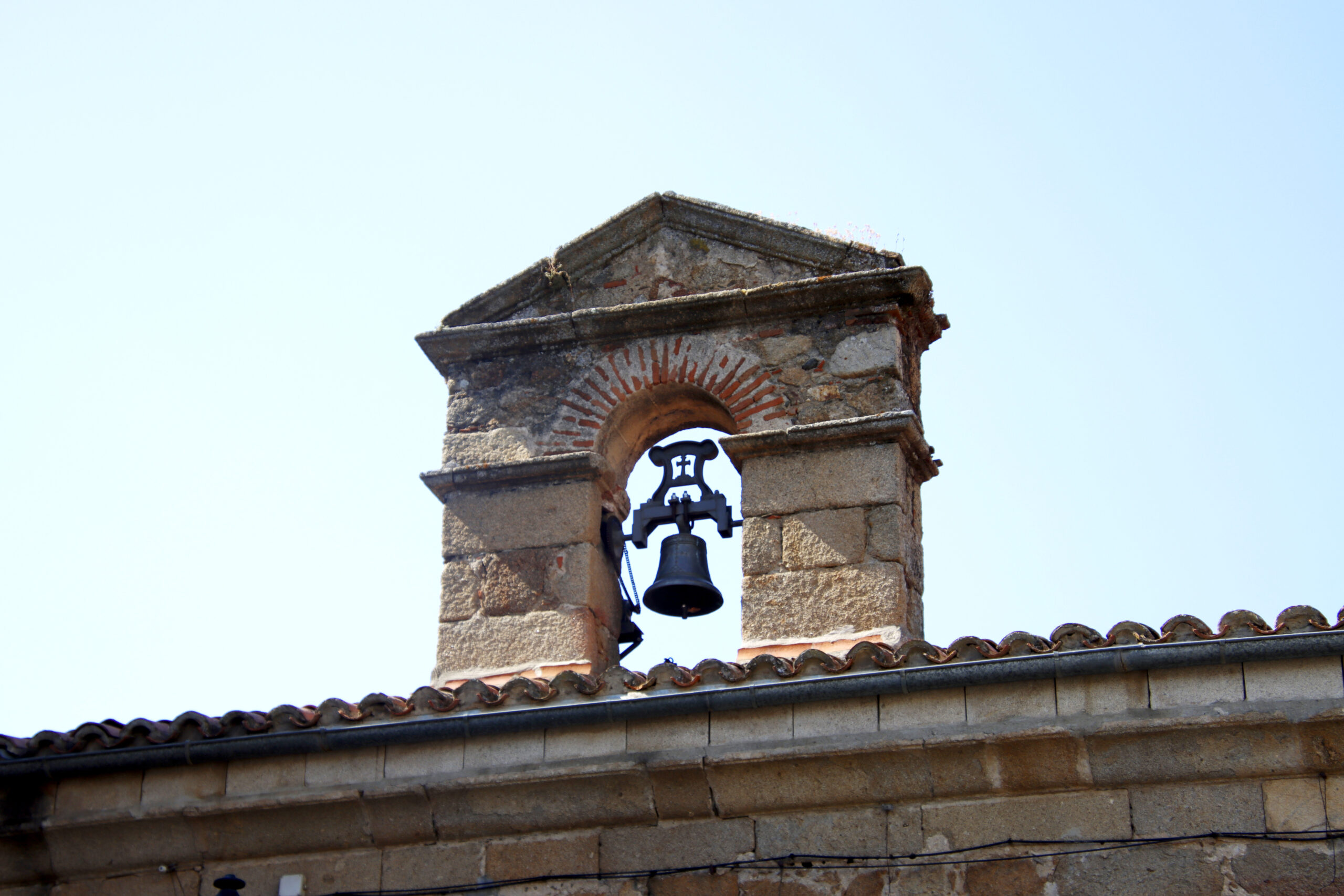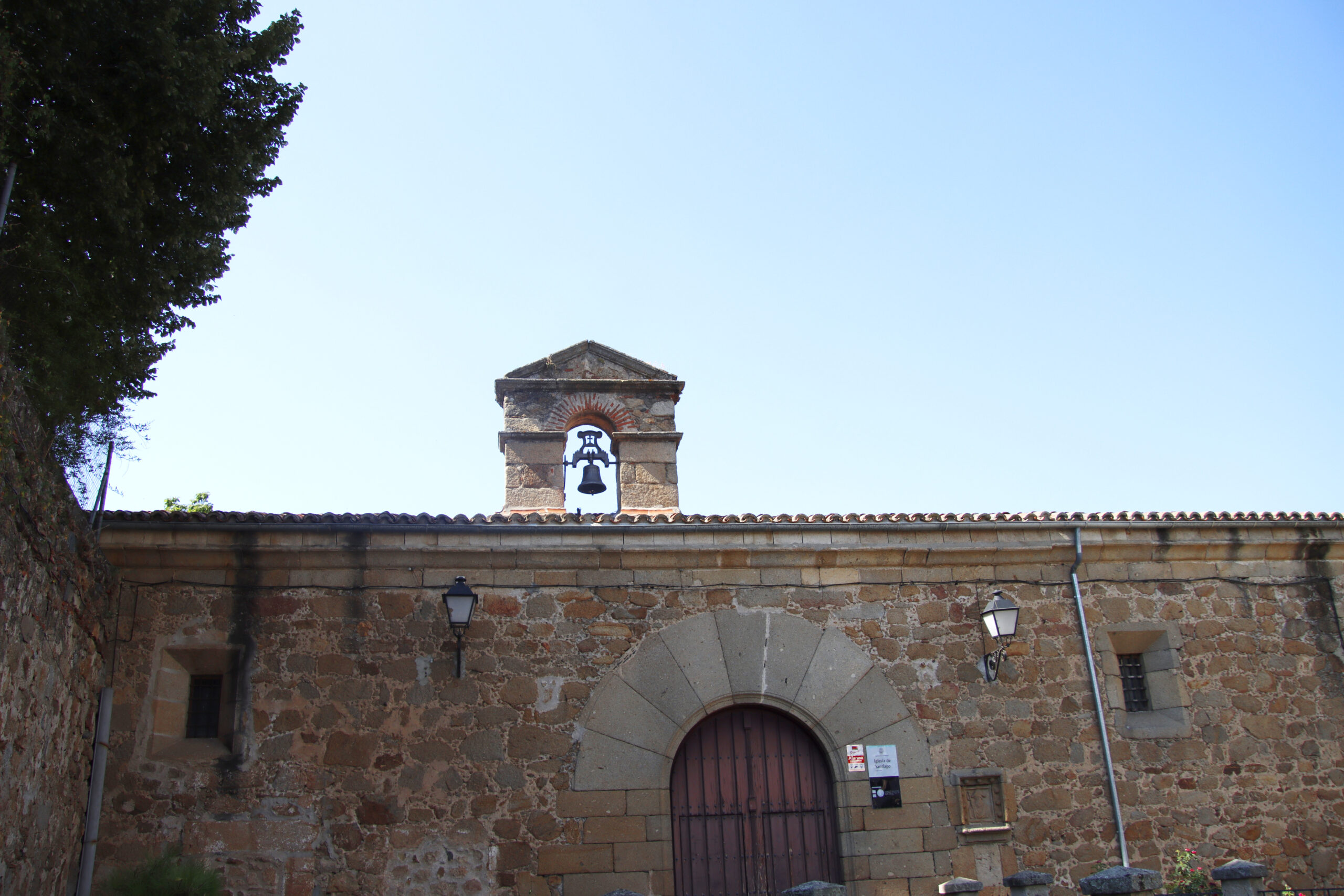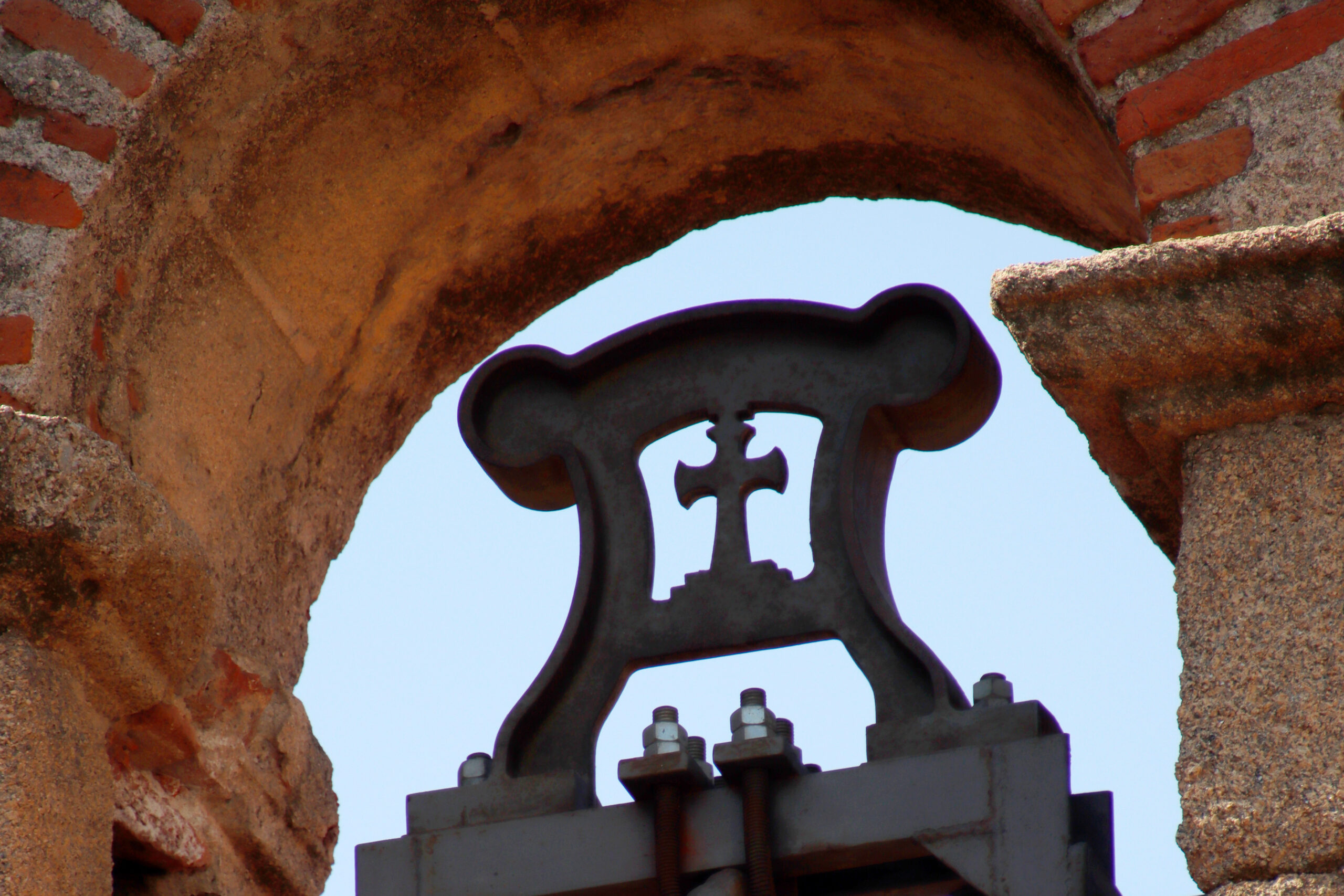Christ of the Battles
- Av. la Salle, 20
- From Tuesday to Sunday: 11:00 - 13:30 / 16:00 - 18:30
- 927 41 20 36
The Church of Santiago was built between the 15th and 16th centuries, and has always been linked to pilgrims on the Camino de Santiago. Although the Silver Route does not pass through the town because it was founded later, medieval pilgrims passed through here to obtain shelter and provisions in its many charitable hospitals, before continuing their route through the mountains of Béjar.
This church outside the walls was born as the parish church of Santiago, and an image of the saint as a pilgrim carved in rock can be seen on its façade, nowadays it is known as the church of Cristo de las Batallas (Christ of the Battles) as this image is the one worshipped inside. It was before this image that the troops from Pláceres, when called by the King to fight against the Moors, knelt, swore to do their duty and placed themselves under its protection.
It is canonically dependent on the parish church of San Pedro and was created outside the walls so that pilgrims who reached the city once the gates were closed could pray there before continuing on their way or in case they did not wish to enter the city. Next to it, different hospitals and convents were built, such as that of San Roque.
The ground plan of the church of Cristo de las Batallas is rectangular, with a very pronounced Romanesque apse, covered with a brick vault. It has three naves, which were built in the 16th century by the bishop D. Gutierrez de Vargas y Cargas. Gutierrez de Vargas y Carvajal, whose coat of arms can be seen as a decorative element in between two of the arches that separate the naves, alternating with others that have the crosses of the Military Orders, especially Santiago.
Different heraldic coats of arms with Xacobean motifs stand out in the interior, although not all of them bear the cross of Santiago, but we can see the pilgrim’s shells joined with the crosses of the military orders of Alcántara or Calatrava.
Anything to improve?



